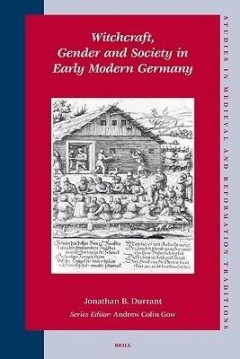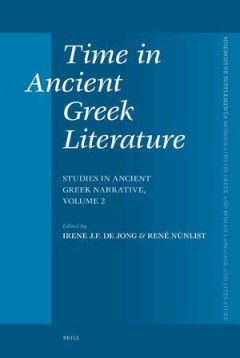Filter by

A Companion to the Cavendishes
"The noble Cavendishes were one of the most influential families in the politics and culture of early modern England and beyond. A Companion to the Cavendishes offers a comprehensive account of the Cavendish family's creative output and cultural significance in the seventeenth century. It discusses the writings of individuals including William and Margaret Cavendish, and William's daughters Jan…
- Edition
- -
- ISBN/ISSN
- 9781641891783
- Collation
- 438 hlm
- Series Title
- -
- Call Number
- -

Translation und Marginalisierung = Intersektionale Perspektiven auf Übersetz…
Übersetzungen spiegeln und bestätigen die Normen der zielkulturellen Mehrheitsgesellschaft und ihrer machthabenden Instanzen, wohingegen Anliegen von Minderheiten meist unberücksichtigt bleiben. Diesen oft übersehenen Zusammenhang zwischen Translation und Marginalisierung leuchtet der interdisziplinäre Open Access-Band für die Frühe Neuzeit systematisch aus und rückt jene Menschen, Figu…
- Edition
- -
- ISBN/ISSN
- 9783662694695
- Collation
- XII, 326 hlm; ill., lamp.,
- Series Title
- -
- Call Number
- -

Women and Gender in the Early Modern Low Countries, 1500 - 1750
Women and Gender in the Early Modern Low Countries, 1500-1750 brings together research on women and gender across the Low Countries, a culturally contiguous region that was split by the Eighty Years' War into the Protestant Dutch Republic in the North and the Spanish-controlled, Catholic Hapsburg Netherlands in the South. The authors of this interdisciplinary volume highlight women’s experie…
- Edition
- -
- ISBN/ISSN
- 9789004391352
- Collation
- 346 hlm; ill., lamp.,
- Series Title
- Studies in Medieval and Reformation Traditions, Volume: 217
- Call Number
- -

Witchcraft, Gender and Society in Early Modern Germany
Recent witchcraft historiography, particularly where it concerns the gender of the witch-suspect, has been dominated by theories of social conflict in which ordinary people colluded in the persecution of the witch sect. The reconstruction of the Eichstätt persecutions (1590-1631) in this book shows that many witchcraft episodes were imposed exclusively ‘from above’ as part of a programme o…
- Edition
- -
- ISBN/ISSN
- 9789047420552
- Collation
- 316 hlm; ill., lamp.,
- Series Title
- Studies in Medieval and Reformation Traditions, Volume:
- Call Number
- -

Women and War in Roman Epic
In Women and War in Roman Epic, Elina Pyy discusses the narrative and ideological functions of gender in the works of Virgil, Lucan, Statius, Silius Italicus and Valerius Flaccus. By examining the themes of violence, death, guilt, grief, and anger in their epics, she offers an account of the intertextual tradition of the genre and its socio-political background. Through a combination of classic…
- Edition
- -
- ISBN/ISSN
- 9789004443457
- Collation
- 342 hlm; ill., lamp.,
- Series Title
- The Language of Classical Literature, Volume: 33
- Call Number
- -

Verse and Transmutation : A Corpus of Middle English Alchemical Poetry (Criti…
Verse and Transmutation: A Corpus of Middle English Alchemical Poetry identifies and investigates a corpus of twenty-one anonymous recipes for the philosophers’ stone dating from the fifteenth century. These were circulated and received in association with each other until the mid-seventeenth century, when a number of them appeared in Elias Ashmole’s Theatrum Chemicum Britannicum. These …
- Edition
- -
- ISBN/ISSN
- 9789004254831
- Collation
- 390 hlm; ill., lamp.,
- Series Title
- Medieval and Early Modern Philosophy and Science, Volume: 21
- Call Number
- -

Founding Territorial Cults in Early Japan
The first book that deals with the territorial cults of early Japan by focusing on how such cults were founded in ownerless regions. Numerous ancient Japanese myths and legends are discussed to show that the typical founding ritual was a two-phase ritual that turned the territory into a horizontal microcosm, complete with its own ‘terrestrial heaven’ inhabited by local deities. Reversing M…
- Edition
- -
- ISBN/ISSN
- 978-90-04-68645-8
- Collation
- oer.unej.ac.id
- Series Title
- Brill's Japanese Studies Library, Volume: 76
- Call Number
- -

Travelling Chronicles: News and Newspapers from the Early Modern Period to th…
Travelling Chronicles presents fourteen episodes in the history of news, written by some of the leading scholars in the rapidly developing fields of news and newspaper studies. Ranging across eastern and western Europe and beyond, the chapters look back to the early modern period and into the eighteenth century to consider how the news of the past was gathered and spread, how news outlets gaine…
- Edition
- -
- ISBN/ISSN
- 9789004362871
- Collation
- 408 hlm; ill., lamp.,
- Series Title
- Library of the Written Word, Volume: 66 Library of the Written Word - The Handpress World, Volume: 66
- Call Number
- -

Topographies of Tolerance and Intolerance = Responses to Religious Pluralism …
Topographies of Tolerance and Intolerance challenges the narrative of a simple progression of tolerance and the establishment of confessional identity during the early modern period. These essays explore the lived experiences of religious plurality, providing insights into the developments and drawbacks of religious coexistence in this turbulent period. The essays examine three main groups of a…
- Edition
- -
- ISBN/ISSN
- 9789004371309
- Collation
- 278 hlm; ill., lamp.,
- Series Title
- Studies in Central European Histories, Volume: 64
- Call Number
- -

Time in Ancient Greek Literature = Studies in Ancient Greek Narrative, Volume 2
This is the second volume in a series of volumes which together will provide an entirely new history of ancient Greek (narrative) literature. Its organization is formal rather than biographical. It traces the history of central narrative devices, such as the narrator and his narratees,time, focalization, characterization, and space. It offers not only analyses of the handling of such a device b…
- Edition
- -
- ISBN/ISSN
- '9789047422938
- Collation
- 556 hlm; ill., lamp.,
- Series Title
- Mnemosyne, Supplements, Volume: 291
- Call Number
- -
 Computer Science, Information & General Works
Computer Science, Information & General Works  Philosophy & Psychology
Philosophy & Psychology  Religion
Religion  Social Sciences
Social Sciences  Language
Language  Pure Science
Pure Science  Applied Sciences
Applied Sciences  Art & Recreation
Art & Recreation  Literature
Literature  History & Geography
History & Geography